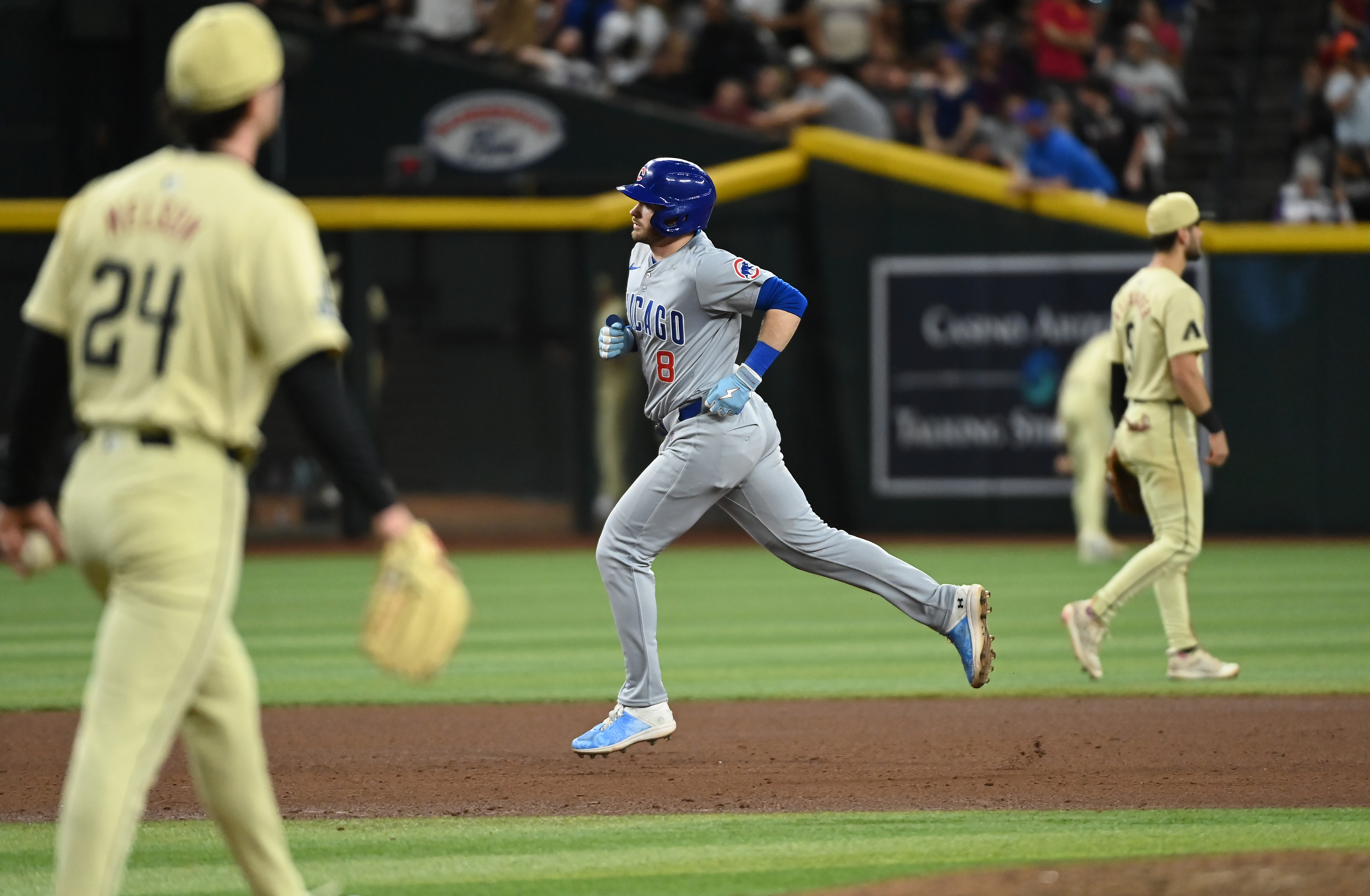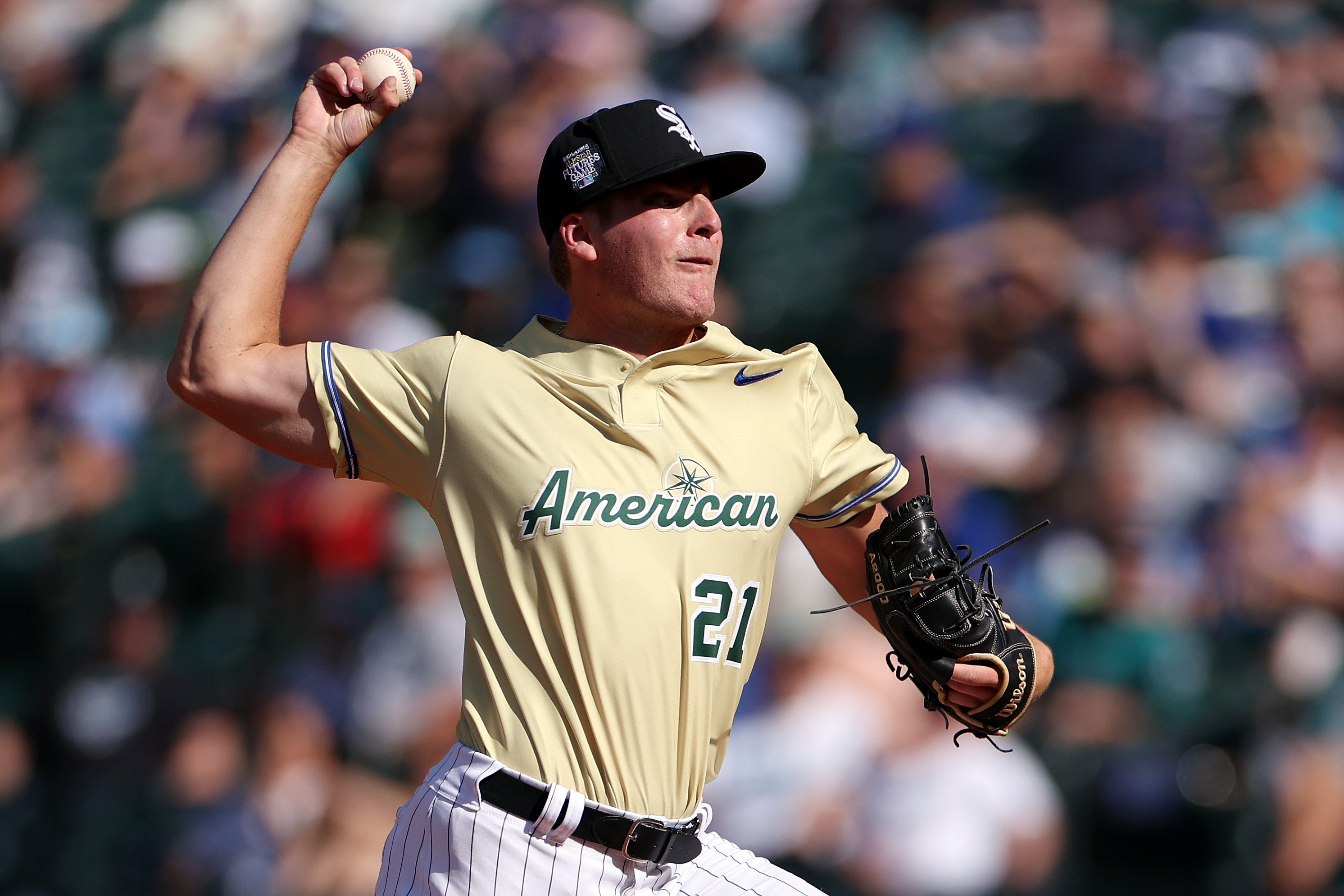He’s still blowing hitters away and walking more than he’d like. But White Sox prospect Michael Kopech has also begun to incorporate some of the many nuances of being a pitcher into his approach and is improving.
In order to keep hitters off balance, the Double-A Birmingham pitcher has added a two-seam fastball to his repertoire and is also working to better utilize his changeup. Kopech was named the organization’s minor league pitcher of the month in May on Thursday after he struck out 47 batters and posted a 2.31 ERA in 35 innings. White Sox minor league pitching coordinator Richard Dotson said he likes what he has seen from Kopech, who has just 210 professional innings pitched to his credit.
“It’s the process,” Dotson said. “He can still throw the crap out of it, but he’s learning to pitch.
“He’s doing really well and making strides.”
There’s no doubt Kopech has the tools for success at the major league level. He throws a 100-mph-plus fastball and has a wicked slider to accompany it. Those two pitches alone could almost certainly have him working out of a major league bullpen right now.
But the 11th ranked prospect in baseball, according to MLBPipeline.com, wants to be a starting pitcher. And it sounds as if he realizes that he’s going to need some softer pitches in his arsenal to become that pitcher.
The White Sox would like Kopech to rely more often on his changeup, which has above-average potential and grades out to 50 on the 20-80 scouting scale. He threw it 4-5 times on Wednesday when he allowed an unearned run and struck out 10 batters in 5 2/3 innings. Kopech said he’s comfortable with the changeup, but still needs to improve how he implements it.
MLB
[WHITE SOX TICKETS: Get your seats right here]
“I’ve given up a couple home runs on changeups this year just because I’m speeding guys bats up,” Kopech said. “It has become a better pitch, but I have to be smart about when I’m using it and to whom I’m using it.”
That’s where the two-seamer has been helpful. Whereas the fastball reportedly touched 105 mph last July, the two-seamer provides variance in velocity. With the sinker utilized, Kopech’s fastball velocities now have a range between 94-102 mph.
Unlike it’s rapid, straighter four-seam brethren, Kopech’s sinker has “tail and run -- it has movement with angle,” Dotson said.
“It’s not necessarily a fourth pitch,” Kopech said. “Pretty much another fastball, but at the same time it’s disruption of timing, too.”
Disruption is the key word here. Kopech should always be confident in his 102 mph fastball. But some hitters will be able catch up to that pitch at the major league level and he’ll need offspeed pitches to keep them from looking for the four-seamer.
Also, by trying not to blow every hitter away, Kopech should see a natural reduction in his walk-rate. Kopech said he has strived to pitch to contact more often when he can in games, though he isn’t afraid to pitch for a strikeout with runners on base.
While he has improved his command some, Kopech would like to be even better. After walking 10 batters in his first 12 innings pitched, Kopech has walked 21 in the last 41, including 17 in 35 May innings. That’s a six-percent reduction in walk rate from 18.2 percent in April to 12.2 percent in May.
Still, that translates to 97 walks in 200 innings, a figure he’d like to see decrease. But given his 2.38 ERA and the fact that opposing hitters have only a .539 OPS against him, Kopech knows he’s not too far from where he needs to be.
“My walks are close misses,” Kopech said. “I have an approach to each and every hitter. I have a plan where I go into the game and if I tally up a couple walks it’s not as big a deal as if I’m trying to go after a guy and I’m just missing. It’s getting there, but it’s not exactly where I want it. But I’m a little more comfortable than I was at the beginning of the year.”


